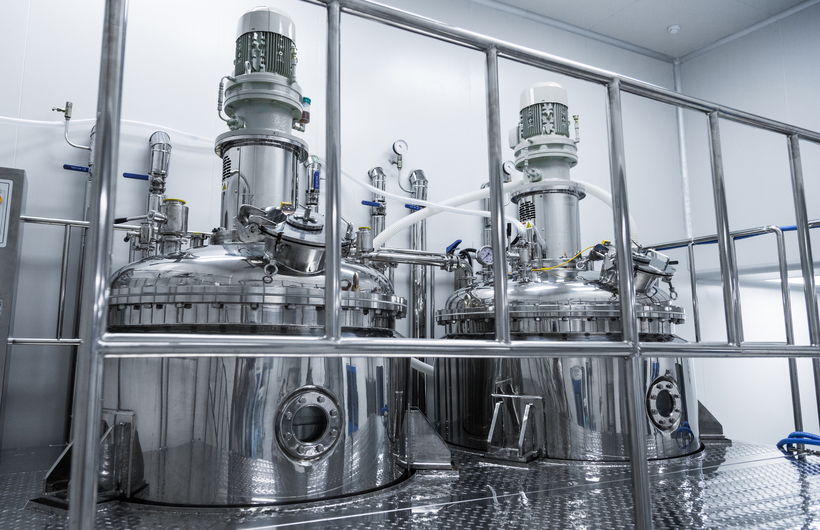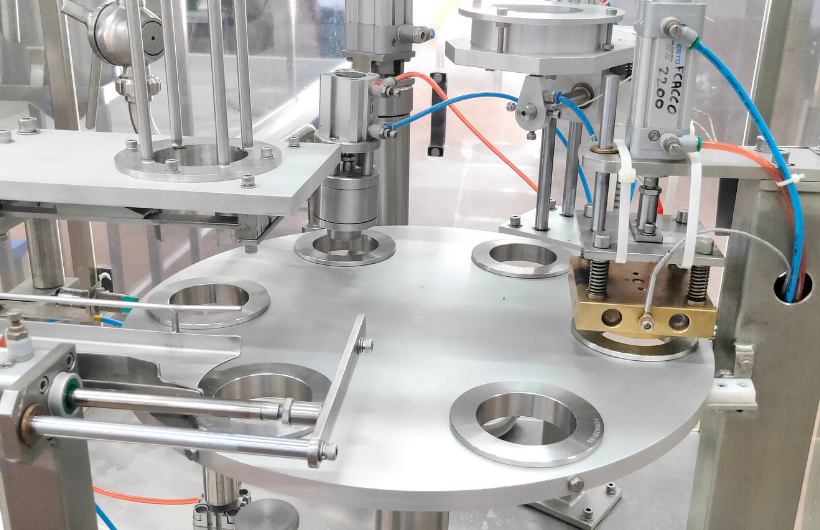15 February 2024
Homogeniser- A powerful machinery in Dairy for Improving Product Quality

A Homogeniser is an industrial piece of equipment used for the homogenisation process of various types of materials which include tissue, plants, food, soil, etc. The most common form of this equipment is mortar and pestle, which has been used for hundreds of years. The modern versions of this equipment are based on blender-type instruments.
Let’s get into technicalities
A Disperser is used to break bigger particles with sizes up to 1 micron into fine particles with the help of the homogenizing devices. Homogenization has been a good old industrial practice to produce a different product in the dairy & food industries.
What happens in the process?
In the homogenisation process, breaking the fat particle below 1 µ is done by passing through a narrow slit that is slightly larger than the diameter of globules. velocity in the narrow slit is up to 250 m/s. The rapid velocity and smaller slit induce high pressure, which causes globules to break.?
What are the stages of homogenisation?
Homogenisation is a two-stage process. First, the particles must be broken down, and second, clustering must be avoided. The pressure used during the process of Homogenisation depends on the product characteristics, such as fat content, viscosity, total solids, etc.
Application of Cell Disruption Machine
1) Dairy & Food
The dairy & food industries use high-shear mixers for processing different products with different objectives. For example, in milk, cream, coffee cream, and condensed milk, a dairy plant homogeniser is used to prevent cream separation, improve flavor, increase whitening power, & increase viscosity.
In yogurt, it is used to make a more stable gel; in ice cream, it is used to prevent fat separation during freezing; & in full cream milk powder, there is less separation of free fat.
2) Pharmaceuticals and Biotechnology
In the pharmaceutical and biotechnology sectors, homogenizers are instrumental in the production of drugs, vaccines, and therapeutic formulations. These machines help break down active ingredients into fine particles, improving bioavailability and ensuring uniform distribution.
The tissue machine also facilitates emulsification, dispersion, and cell disruption, allowing for efficient extraction of desired compounds.
3) Nanotechnology & Cosmetics
Homogenisers have found their way into the realm of nanotechnology and cosmetics. In nanotechnology, these devices aid in the preparation of nanoparticles, enhancing their stability and uniformity. Similarly, in the cosmetic industry, tissues are used to create toothpaste, emulsions, creams, nail enamels, perfumes, shampoos, and lotions with smooth textures and consistent properties.
4) Chemical
When subjected to the dynamic pressure produced by a homogeniser, high-value compounds like polyphenols, flavonoids, lycopene, and so forth are more stable and extractable. Ink paints, silicone emulsions, rubber, adhesive, AKD resin, defoamer, sizing chemicals, grease, latex, textile emulsion, and other products are all produced using homogenizers.
GOMA HOMOGENIZER – WHAT MAKES IT SPECIAL?
Goma Engineering is a world leader in the manufacturing of high-pressure High Shear mixers for different applications supplied in India as well as in Africa, Australia, Europe, the Middle East, Sri Lanka, Bangladesh, Nepal, Thailand, Malaysia, etc.
With state-of-the-art manufacturing facilities and certifications like CE & 3A, we offer a wide range of homogenizers, from 10 LPH to 20,000 LPH, with pressure running up to 1500 depending upon the need and application of our clients.
We have a separate Research & Development Center to develop the new generation, energy efficient & highly efficient homogeniser. Our R&D center is recognized & supported by the Government of India.
Homogeniser for milk processing plants use a pressure of up to 200 bar (3000 PSI).
Before homogenisation, milk must be heated to a minimum temperature of 70°C, to inactivate the lipase enzyme, check rancidity, and get maximum homogenisation efficiency because of melted fat.

